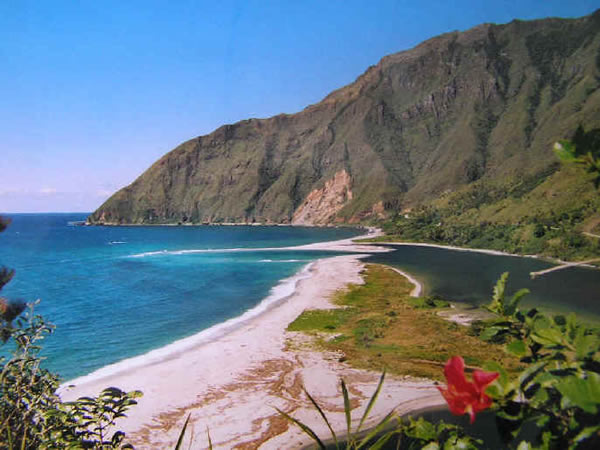This post is also available in:
![]() 简体中文
简体中文 ![]() 繁體中文
繁體中文 ![]() Deutsch
Deutsch ![]() Français
Français ![]() Italiano
Italiano ![]() Português
Português
New Caledonia (Nouvelle-Calédonie) is a French “sui generis” community, located in the region of Melanesia in the southwest Pacific just north of the Tropic of Capricorn, about 1 500 km from the coast of Australia and 2,000 km northeast of New Zealand.
The territory, which includes 19,058 sq km of land that extends over a maritime area whose area reaches [dropcap][/dropcap] 1,450,000 sq km, consists of a main island, Grande Terre, the Loyalty Islands (îles Loyauté) of which are part the islands of Ouvea, Lifou, Tiga and Maré, and the small archipelagoes of îles Belep, îles Chesterfield, récifs de Bellona and other smaller islands such as the Isle of Pines (île des Pins).
GEOGRAPHY
Grande Terre (16,372 square kilometers) is the largest island of New Caledonia, it has an elongated shape from northwest to southeast, and is a long 400 km and between 50 and 70 km wide, it has also the highest mountain of nation Mount Panié, which rises to 1,628 meters.
In Grande Terre is the vast majority of the population, especially in the south where is the capital Nouméa. The island of Grande Terre is surrounded by one of the most extensive coral reefs of the Earth, long 1,600 km, is located between 10 and 50 km away from the coast of the island and covers a total area of 24,000 square kilometers.
[divider]
[divider]
THE LOYALTY ISLANDS
The Loyalty Islands form one of the three provinces into which New Caledonia is divided. This archipelago is located about 100-150 km east of Grande Terre, between 20 and 22 ° south of the equator, and is made up of four main islands: Lifou (1,207 sq km), Maré (641 sq km), Ouvea ( 132 sq km) and Tiga (10 sq km), and some uninhabited smaller islets. The islands are raised coral atolls, where their rise has caused, with the exception of Ouvea, the disappearance of the internal lagoon, all the islands have interesting karst phenomena, caves, cavities filled with fresh or salt water, etc.
THE ECONOMY
The main source of income of the country is given by the mining, in particular that of deposits of nickel for which production New Caledonia is between the first places in the world ranking (production in 2003: 111,900 tonnes, 8.7% of world production, 4 th producer in the world) and owns more than 25% of the world’s known nickel resources. In addition to nickel there are also significant deposits of iron, cobalt, copper, manganese and chromium. Among other productive activities are agriculture (vegetables, coconut palms, coffee, maize), breeding, timber, tourism and fisheries.
A LITTLE KNOWN, BUT SPECTACULAR DESTINATION
New Caledonia is one of the most remote corners of the planet, but also a place where you can admire a luxuriant nature and the traditions of a proud and hospitable population. The country is home to a pristine sea with a coral reef that stretches for hundreds of kilometers.
The beaches of the Isle of Pines and the islands of the archipelago of the islands of Loyalty (Lifou, Maré and Ouvea) are, without doubt, among the most beautiful in the world. Among these, the most beautiful are those of Kuto and Kanumera on the Isle of Pines. Luengoni, Peng and Cheteaubriand on the island of Lifou. Shini, Patho-Kurine and Locekol on the island of Maré. And finally Mouli on the island of Ouvea. In the islands of Loyalty, the most lively traditions of New Caledonia have been preserved, made of myths and legends, of village life that has not yet lost its authenticity.
The site of the Government of New Caledonia.
[divider]
- Area: 19,058 sq km. (Arable 1%, Pastures 15%, Forests and Woodlands 39%, Uncultivated and Unproductive 45%)
- Population: 240,390 (data: 2007) (Kanaks 44,1%, Europeans 34,1%, Wallisians 9%, Tahitians 2,6%, Indonesians 2,5%, Vanuatu 1,4%).
- State Capital: Noumea (Grande Terre island).
- Languages: French and 28 indigenous Austronesian languages.
- Religion: Christian: Roman Catholic 60%, Protestant 30%.
- Currency: CFP Franc (XPF).
- Time: +11 hours compared to London (UK) (+10 hours when London (UK) has daylight saving time). UTC +11 hours.
[divider]
[divider]
This post is also available in:
![]() 简体中文
简体中文 ![]() 繁體中文
繁體中文 ![]() Deutsch
Deutsch ![]() Français
Français ![]() Italiano
Italiano ![]() Português
Português
